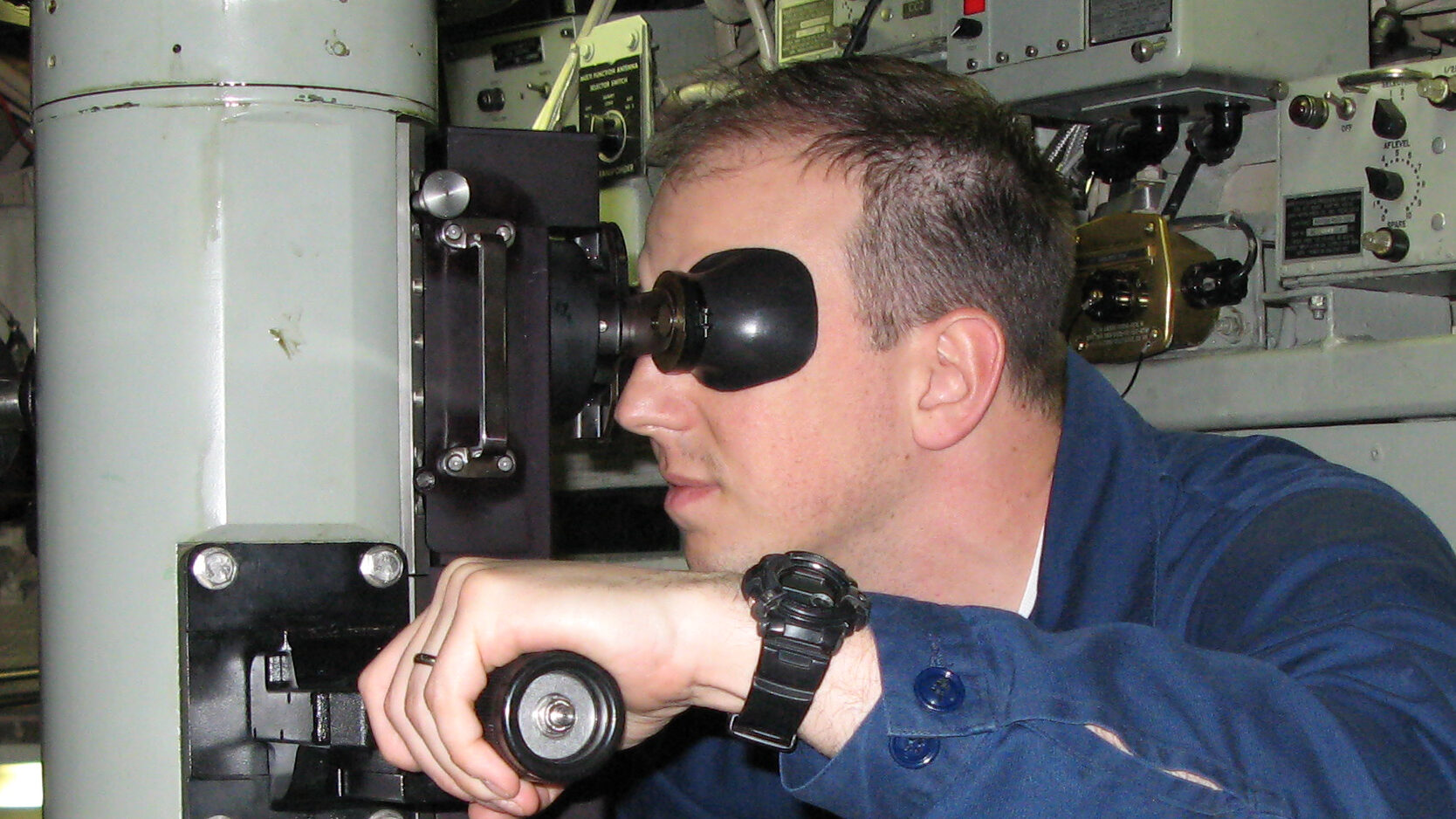
The USS Maryland’s “Gold” crew executive officer, Navy Lt. Cmdr. Louis J. Springer, takes a look through the vessel’s periscope, Feb. 17. (DVIDS)
WASHINGTON: The Navy commander in charge of information warfare is moving to expand the number of billets for dedicated IW officers in both amphibious ready groups and aboard submarines, the latest signal of the primacy of data in the modern military operations, especially undersea.
“I don’t think we should necessarily burden a submarine operator on board the submarine who already has a really complex environment,” said Vice Adm. Kelly Aeschbach, commander of naval information forces, while speaking to a small group of reporters at the West 2022 conference in San Diego. “It may have been different 15, 20 years ago when I don’t think we had as much competition in the undersea space. We’re facing more competition now.”

Vice Adm. Kelly Aeschbach, commander of Naval Information Forces, speaks at West 2022 on Feb. 17. (U.S. Navy Photo by Robert Fluegel/Released)
Aeschbach said she has already garnered support from the respective three-star officers charged with overseeing the surface and submarine forces.
“On the amphibious ready group, I am working with [Vice] Admiral [Roy] Kitchener on permanent establishment of an information warfare commander,” she said. He “is aligned with me, and we have requested through the budget process to create [those] positions and it’s just a matter of …the bureaucratic process of trying to get that in there.”
Aeschbach added that request has been “prioritized” and she is “optimistic” it will come to fruition.
For submarine forces, Aeschbach said the submarine type commander, Vice Adm. Bill Houston has “looked within his own trade space” and committed to adding IW officer billets aboard submarines.
“We were talking about the example that the N2 on the submarine forces staff is generally a captain,” she said, using the Navy’s internal code for an intelligence officer billet. “And often that is the first time that captain has had a chance to work directly in that warfighting mission area.”
Information warfare is not new to the Navy or the Pentagon in terms of what it brings to the fight – a combination of communications, intelligence, cyberspace and electronic warfare capabilities that are collectively employed to do two things: ensure the US commander has the best information available, and to cloud or confuse an adversary’s assessment of the battlespace.
But as a formal type commander, the most senior operational position for each of the fleet’s various forces, Aeschbach’s position on paper is the newest. The Navy first formed the Information Dominance Corps in 2009 to rally both uniformed and civilian expertise focused on IW capabilities. In 2016, after several name changes, the service settled on “Naval Information Forces” with a three-star admiral leading it.
Aeschbach, an intelligence expert by trade, is only the third admiral to hold the billet since its establishment in 2016.
While speaking to reporters, she said until now the job of IW officers on submarines has been done “part-time” by other billets.
“[Vice] Adm. Houston, I think, wants to focus his professionals on literally: ‘I’ve got to drive a submarine and I’ve got to make sure it’s in the right place at the right time,’” she said. “Whereas we’re there to advise [that] this is what your environment looks like, this is where we think you should go, this is how we can help potentially protect anybody [from] knowing where you are.”
Norway’s top officer on his ‘biggest challenge,’ next frigate and new NATO neighbors
Gen. Eirik Kristoffersen, Norway’s Chief of Defense, talks to Breaking Defense about his plans for spending on new frigates and subs, the challenges of upgrading Norway’s “digital backbone” and refilling the military’s stocks.


























